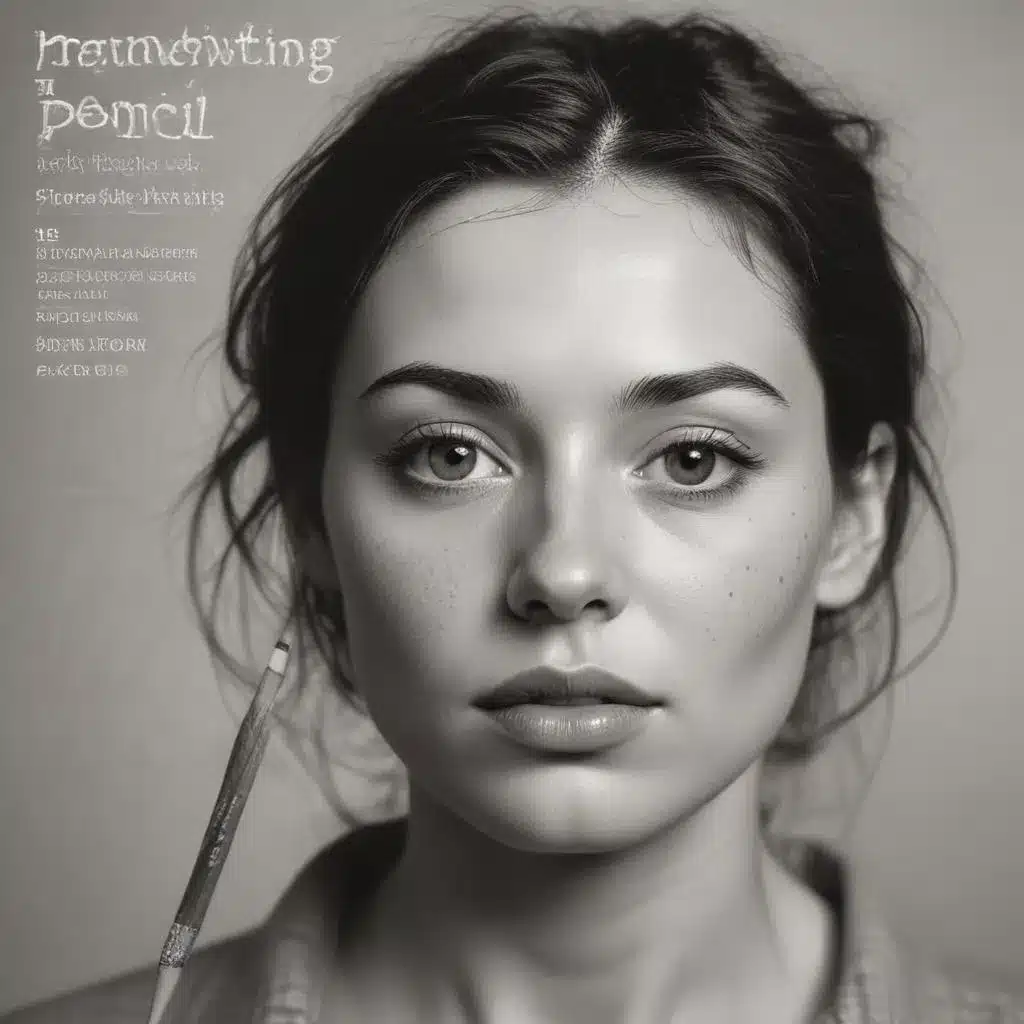
The pencil has long been a fundamental tool in the artist’s toolkit, offering a direct and accessible means of visual expression. However, in the hands of modern and contemporary artists, the humble pencil has been reinvented, transformed into a vehicle for boundless creativity and experimentation. From the expressive, gestural lines of the Expressionists to the abstracted, geometric forms of the Cubists, the pencil has become a medium for challenging traditional notions of drawing and pushing the boundaries of what is possible.
Now, this might seem counterintuitive…
Embracing the Expressive Line
At the turn of the 20th century, Expressionist and Abstract Expressionist artists rejected the rigid hierarchy and naturalistic drawing styles promoted by the academic tradition. In their place, they embraced the power of the expressive line, using it as a means to convey the depths of human emotion and the vibrant energy of the modern world.
Wassily Kandinsky, a pioneer of German Expressionism, sought to translate the unique experience of synesthesia into the visual realm. In his fluid, abstract compositions, he used the pencil to suggest the “vibrations of symphonic music,” capturing the invisible forces that animate the cosmos. The shaky, meandering lines in his “Abstract Composition” evoke a sense of organic movement and texture, while the thick, bold diagonal serves as a guiding force through the chaotic whirlwind of information.
In contrast, Aleksandr Rodchenko, a leading figure in the Constructivist movement, employed the precision of drafting tools like the compass to create his purely non-objective, geometric abstractions. Compositions such as “Compass Composition” demonstrate Rodchenko’s radical break from traditional easel painting, embracing the language of modern design and engineering to forge a new visual vocabulary.
Expressive Distortion of the Figure
Across the 20th century, artists have also used the pencil to explore the expressive potential of the human form, moving beyond the constraints of academic naturalism. Oskar Kokoschka, the Expressionist painter and playwright, created portraits that, in his own words, “intuit from the face, from its play of expressions, and from gestures, the truth about a particular person.” In his lithograph “Max Reinhardt (Head),” the frenetic, erratic lines capture the subject’s apparent state of anxiety, conveying an unsettling psychological intensity.
Similarly, the American sculptor Leonard Baskin approached the human figure with a profound awareness of its fragility and imperfection. In his powerful drawing “Two Men,” he distorts the bodies with dark, angular marks that suggest scars or veins rather than smooth skin, imbuing the figures with a sense of unsettling vulnerability.
Expanding the Boundaries of Drawing
Even artists known primarily for their work in other media have embraced the expressive potential of the pencil, pushing the boundaries of what drawing can be. The renowned British sculptor Henry Moore, for example, used drawing as a means of quickly expressing ideas from his unconscious, blending human figures and natural forms to create abstracted, sculptural compositions.
In her sketch “Project for Wood and Strings, Trezion II,” the British sculptor Barbara Hepworth demonstrates her mastery of line, using precise, almost mathematical pencil marks to suggest the tensions of three-dimensional space and reinvent the conventions of perspective drawing. Meanwhile, the Japanese printmaker Iwami Reika incorporates found materials, such as driftwood, into her expressive, linear evocations of nature, blurring the divisions between natural elements and creating a sense of restrained drama.
Experimenting with Mixed Media
Contemporary artists have continued to explore the expressive possibilities of the pencil, often in combination with other media. Michael Godard, the self-proclaimed “Rock Star of the Art World,” exemplifies this innovative approach, combining printmaking techniques with painting to create truly unique mixed media works.
Godard’s process begins with the creation of a small portion of the artwork, such as the outline of a martini glass, using printmaking methods. He then builds upon this foundation, painting one of his signature whimsical scenes, such as olives or strawberries enjoying a tropical beach. By embracing the interplay between the spontaneous and the controlled, Godard’s works challenge the traditional boundaries between disciplines, offering a fresh and dynamic interpretation of the drawing process.
Embracing the Digital Realm
As the digital revolution has transformed the creative landscape, many artists have sought to integrate the expressive qualities of the pencil into their digital workflows. Tablets and styluses have become essential tools, allowing for the seamless translation of traditional drawing techniques into the virtual realm.
Through the use of vector illustration software and raster image editing programs, artists can now explore the expressive potential of the pencil with unprecedented precision and versatility. Techniques such as sketching, shading, and blending can be digitally emulated, while the integration of pressure-sensitive inputs and customizable brushes opens up new avenues for mark-making and experimentation.
Conclusion
The pencil, once a humble tool of the academic tradition, has been transformed by modern and contemporary artists into a medium for boundless creativity and innovation. From the expressive, gestural lines of the Expressionists to the abstracted, geometric forms of the Cubists, and the mixed media explorations of contemporary practitioners, the pencil has proven to be a versatile and enduring instrument of artistic expression.
As the digital realm continues to reshape the creative landscape, the pencil has found new life, seamlessly integrating with cutting-edge technologies to offer a wealth of expressive possibilities for the modern artist. By embracing the pencil’s inherent qualities and continually pushing the boundaries of what is possible, artists have reinvented the very nature of drawing, ensuring that this timeless medium remains a vital and dynamic form of artistic expression.
Tip: Practice daily sketching to continually refine your technique